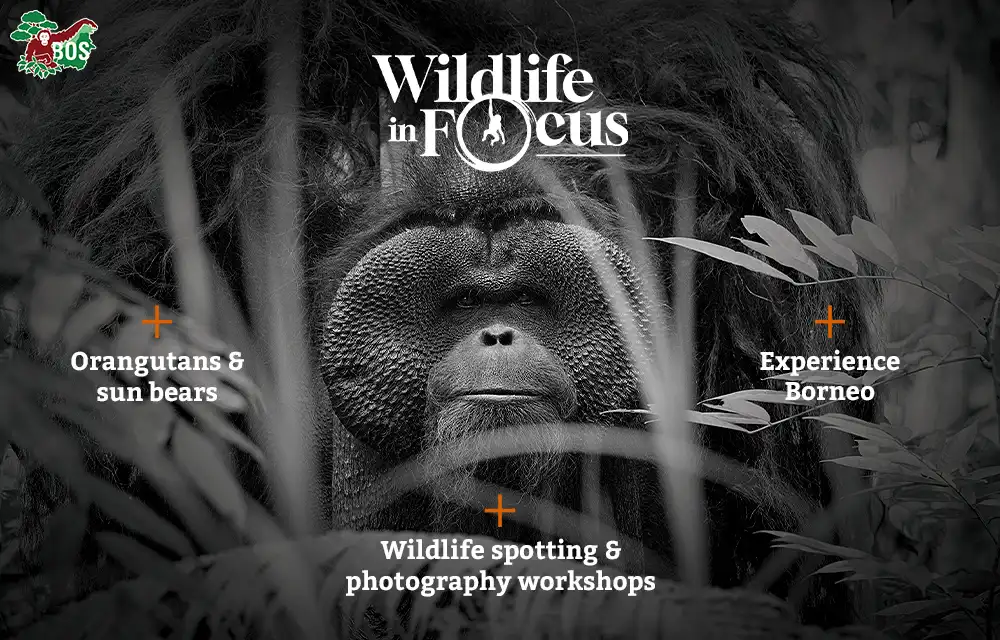One of the joys of working in the heart of the forest is that you never know what the day will hold. Each morning brings the potential for new surprises for our post-release monitoring (PRM) team based at Camp Nles Mamse in the southern part of the Kehje Sewen Forest.
One afternoon after work, when our PRM team was spending time playing badminton, the call of a wreathed hornbill (Rhyticeros undulatus) suddenly echoed. Upon closer inspection, they found a pair of wreathed hornbills perched on a meranti tree (Shorea macroptera). One of our team members, Welem, quickly grabbed a camera to capture the moment of their arrival.
The wreathed hornbill is a sexually dimorphic species, meaning the physical differences between males and females are very distinct. The male wreathed hornbill (left) has an ivory-white face and neck with a brick-red nape, while the female (right) has a black face, neck, and nape. The male has a yellow inflatable throat pouch, whereas the female’s pouch is blue. Both have a body length of up to 90 cm, with males weighing between 1.6 to 3.6 kg and females between 1.3 to 2.7 kg.
Wreathed hornbills are also known to be monogamous. The male will only mate with one female in his lifetime. During the breeding period, the male is in charge of finding food for his small family, while the female is in charge of incubating their eggs. During this time, the female and the chicks completely rely on the male as they build nests within holes of trees that are almost entirely sealed in with mud and droppings, making it so she cannot leave to find food herself. They leave just a small hole open so that the male can pass them pieces of food one by one using the tip of his beak. Their diet is primarily fruits such as figs, but they can also consume other animals such as insects and small reptiles.

The presence of these hornbills is an indicator that the ecosystem is still healthy. Unfortunately, they have been classified as Vulnerable to extinction by the IUCN Red List since 2018.
As the sun began to set, the team took in the special moment as they watched the wreathed hornbill pair enjoy exploring the Kehje Sewen Forest together. Besides being a habitat for orangutans, the Kehje Sewen Forest is also home to a variety of wildlife, including these magnificent wreathed hornbills. For this reason, it is also important for us to protect this ecosystem and all of the wonderful biodiversity that resides within it!
Text by: PRM Team at Camp Nles Mamse, Kehje Sewen Forest, East Kalimantan
Will you help us rescue, rehabilitate and release orangutans back to freedom? Thank you!





